Are you planning to cross a border and need to ensure you have the proper permissions in place? Writing a letter for border crossing permission can feel overwhelming, but it doesn't have to be! With the right template, you can clearly communicate your request and provide all necessary details in a straightforward manner. So, let's dive into how you can craft an effective border crossing permission letter that gets you on your way!
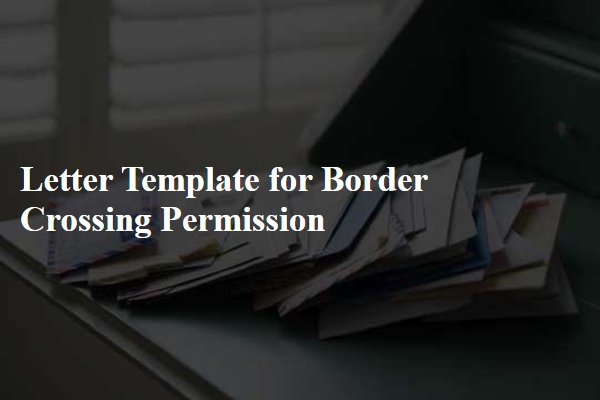
Recipient's Details
Border crossing permissions require detailed documentation concerning the individuals and entities involved. Essential information includes the recipient's name, a legal address in their home country, passport number, and contact details (such as phone number and email address). Specific dates of intended border crossing, along with details of the destination country, and purpose of travel (such as tourism, business, or family visit) must be clearly stated. Travelers should also provide any relevant identification numbers associated with travel permits or visas. Additionally, requirements may vary by international border and each country's regulations, necessitating thorough verification to ensure compliance with customs and immigration laws before attempt.
Applicant's Personal Information
An applicant seeking border crossing permission must provide comprehensive personal information to ensure accurate processing. Essential details include full name, a unique identification number such as a passport number issued by the United States Department of State, date of birth for age verification, and current residential address. Additionally, it is crucial to mention the purpose of crossing, which may include tourism, business, or family visit. Contact information such as phone number and email address adds an extra layer of accessibility for communication with border officials. Clarity and accuracy in personal details enhance the likelihood of a smooth border crossing experience.
Purpose of Travel
Travelers seeking border crossing permission, particularly to enter countries such as Canada or Mexico, need to specify the purpose of travel in their requests. Common purposes include tourism, business meetings, family visits, or educational activities. For example, a tourist may want to explore the iconic Niagara Falls in Canada, while a businessperson might need to attend a conference in Mexico City. Additionally, educational trips to institutions like the University of Toronto can require detailed explanations for entry. Providing specific details like travel dates, intended locations, and the duration of stay enhances the application, making it more likely to be approved by immigration authorities. Including necessary identification documents, such as passports or visas, is crucial in this process.
Travel Itinerary and Duration
Traveling to France for the annual Culinary Festival in Lyon requires precise planning and permission for border crossing. The itinerary spans ten days, commencing on April 1, 2024, and concluding on April 10, 2024, with daily activities centered around culinary demonstrations, workshops, and tasting events. Arrival in Lyon, a city renowned for its gastronomic heritage, takes place on April 1, 2024, at 10:00 AM local time. Departure from Lyon occurs on April 10, 2024, at 5:00 PM. Daily excursions include visits to local markets, vineyard tours in Beaujolais, and participation in evening galas featuring Michelin-starred chefs, ensuring a comprehensive immersion into French cuisine. Understanding the regulations for border crossing within the Schengen Area is crucial, especially the requirement for valid travel documents and the availability of a return ticket.
Compliance and Acknowledgments
Border crossing permissions, essential for regulated international transit, often require formal documentation to ensure legal compliance. This process entails submitting information such as the applicant's identification details, purpose of travel, and relevant dates. Countries like the United States (US) and Canada (CA) implement strict guidelines, often necessitating advance notice of at least 48 hours prior to crossing. Acknowledgments are crucial, as they confirm understanding of laws governing border activities, including customs regulations and restrictions on goods. Failure to comply can lead to fines or denial of entry. Essential entities involved in these processes may include governmental agencies such as the Department of Homeland Security (DHS) or the Canada Border Services Agency (CBSA).
Letter Template For Border Crossing Permission Samples
Letter template of request for border crossing permission for humanitarian reasons.
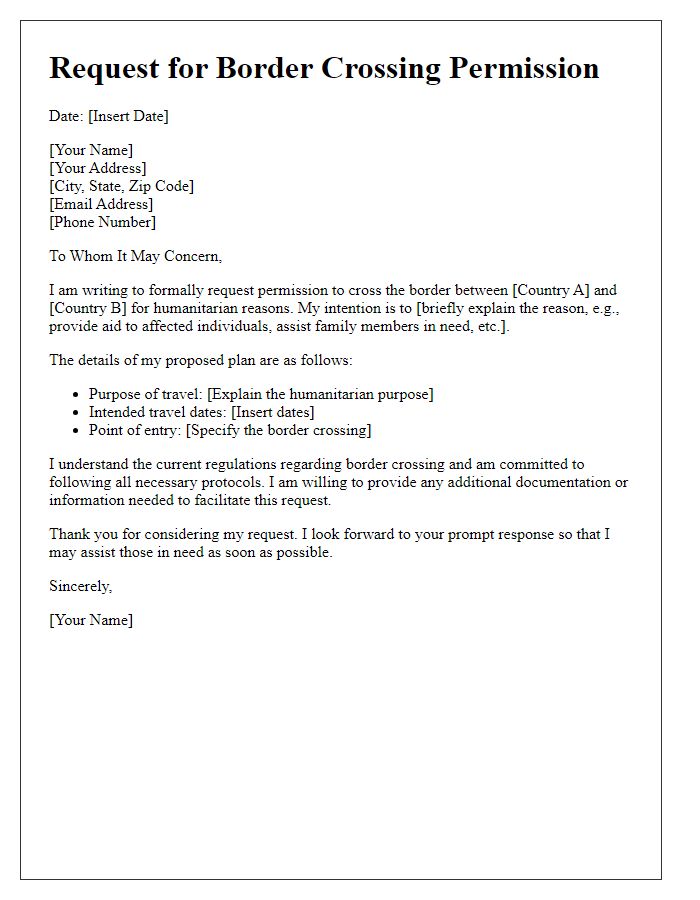
Letter template of application for border crossing permission for business purposes.
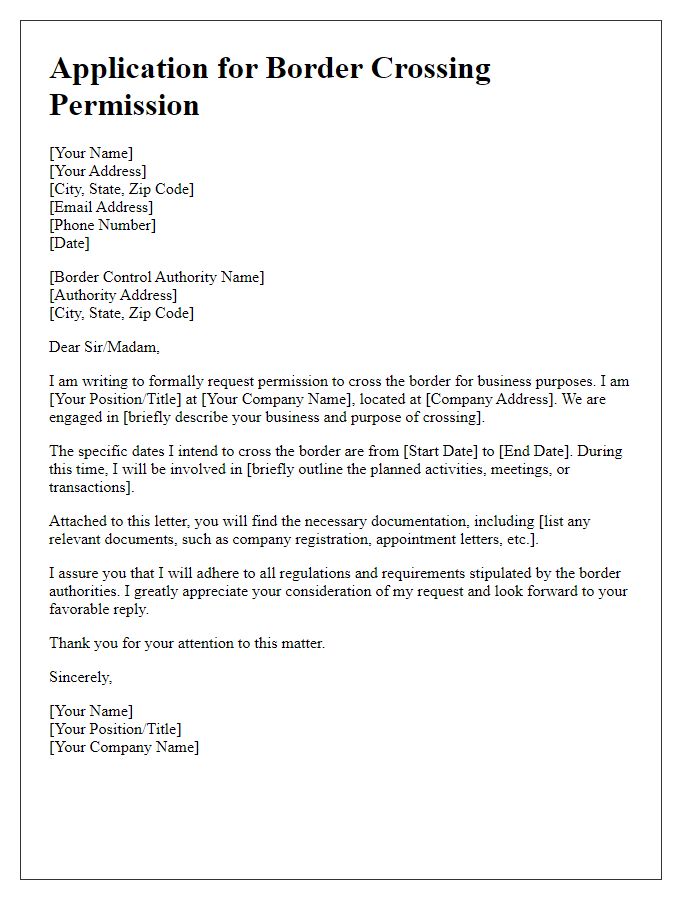
Letter template of inquiry regarding border crossing permission for tourism.
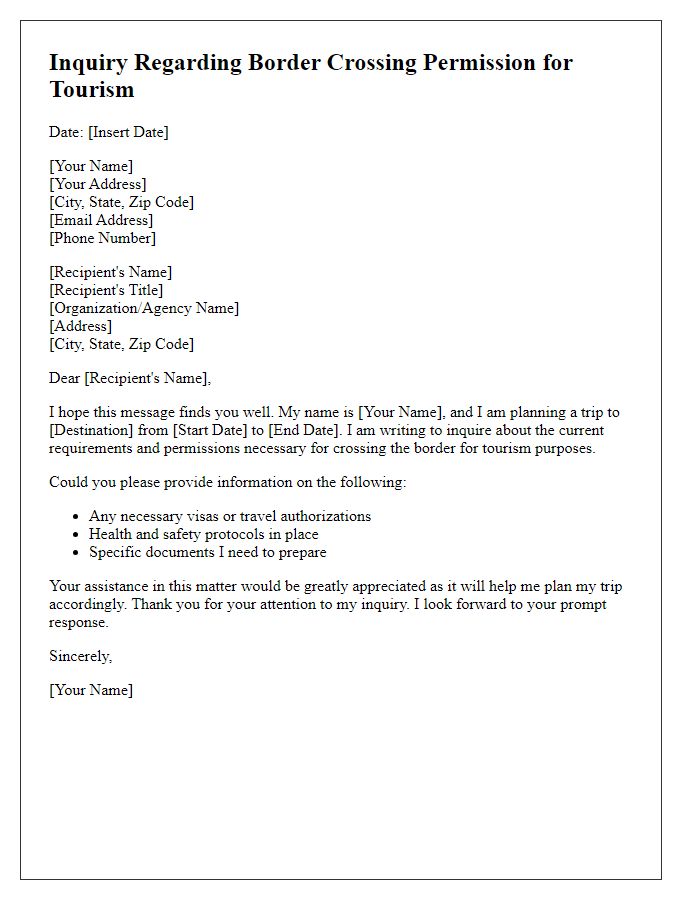
Letter template of appeal for border crossing permission due to family emergency.
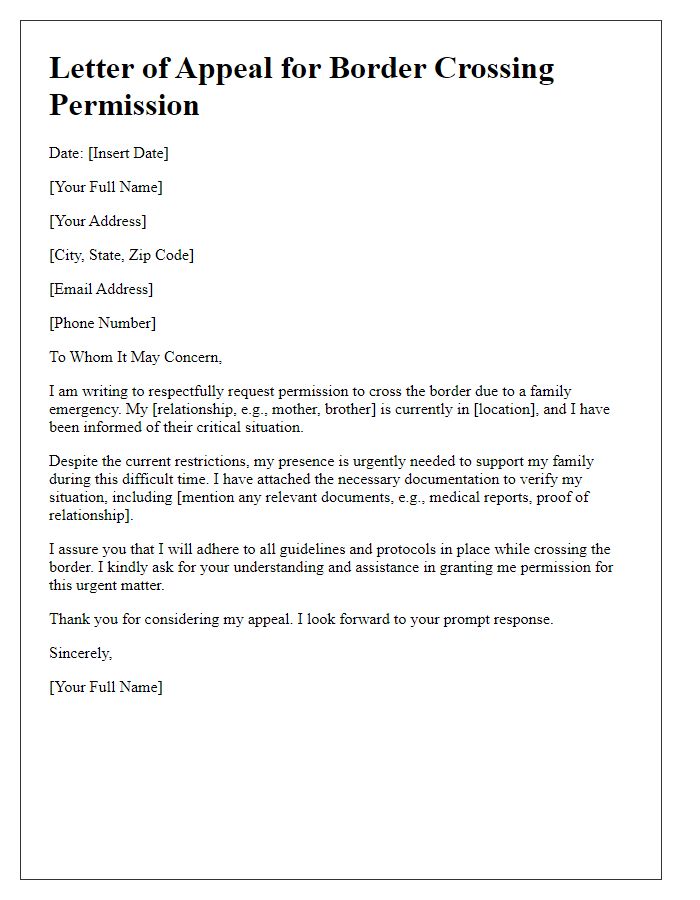
Letter template of notice for border crossing permission for educational travel.
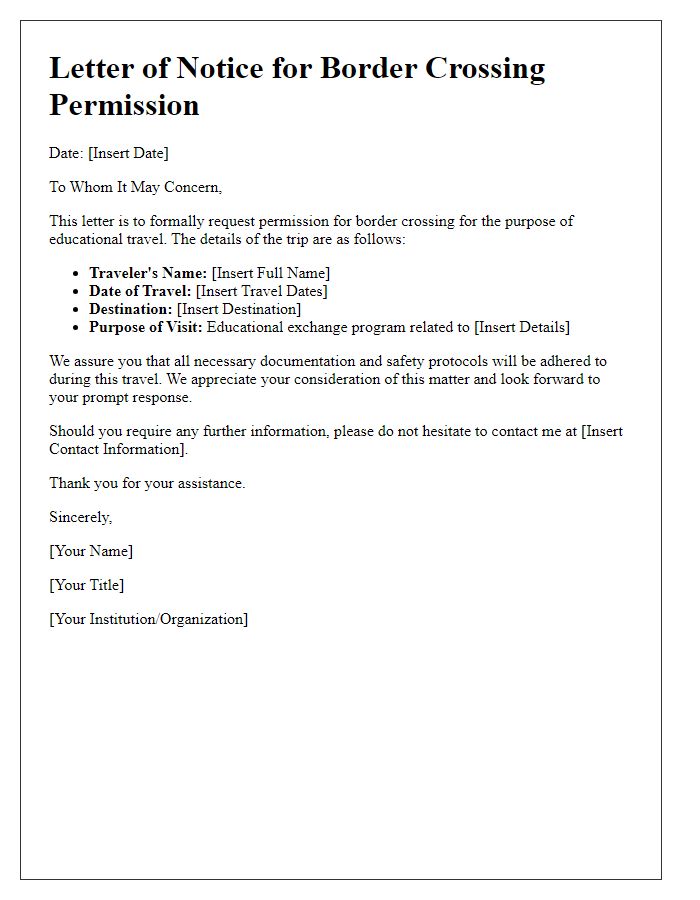
Letter template of formal request for border crossing permission for medical reasons.
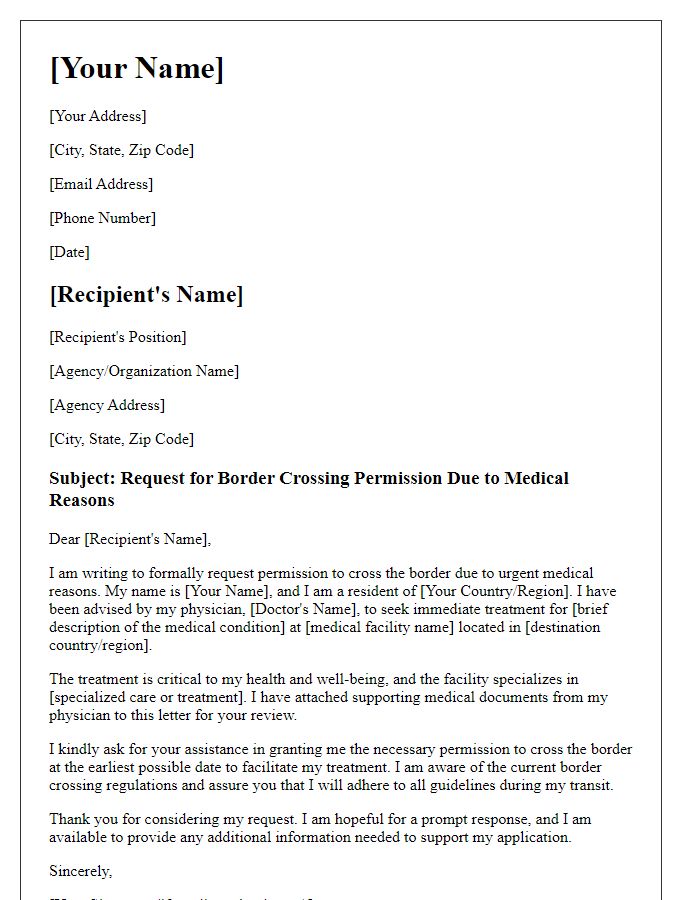
Letter template of submission for border crossing permission for diplomatic visits.
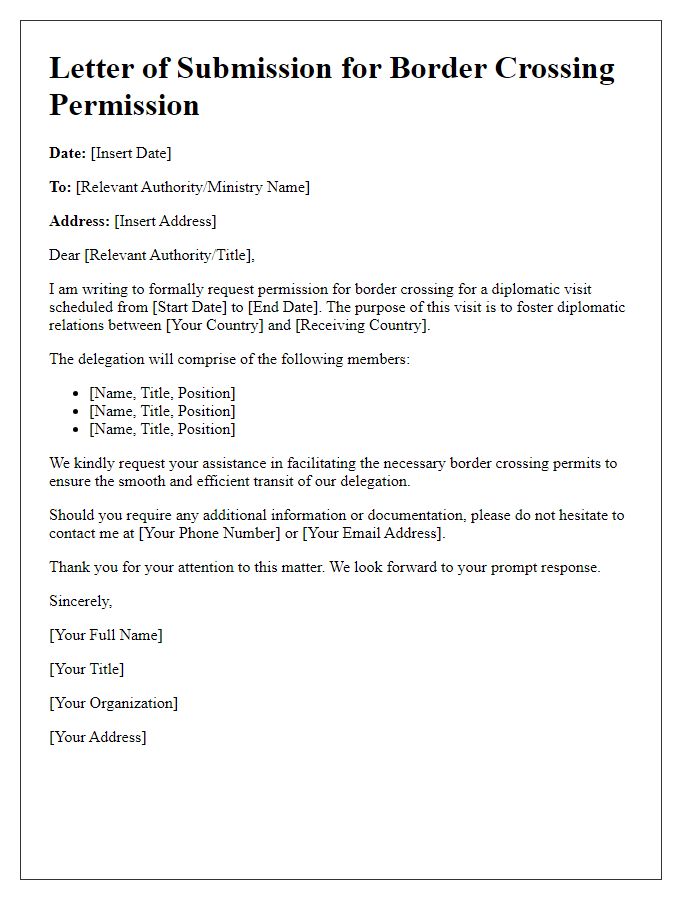
Letter template of statement for border crossing permission for cultural exchange.
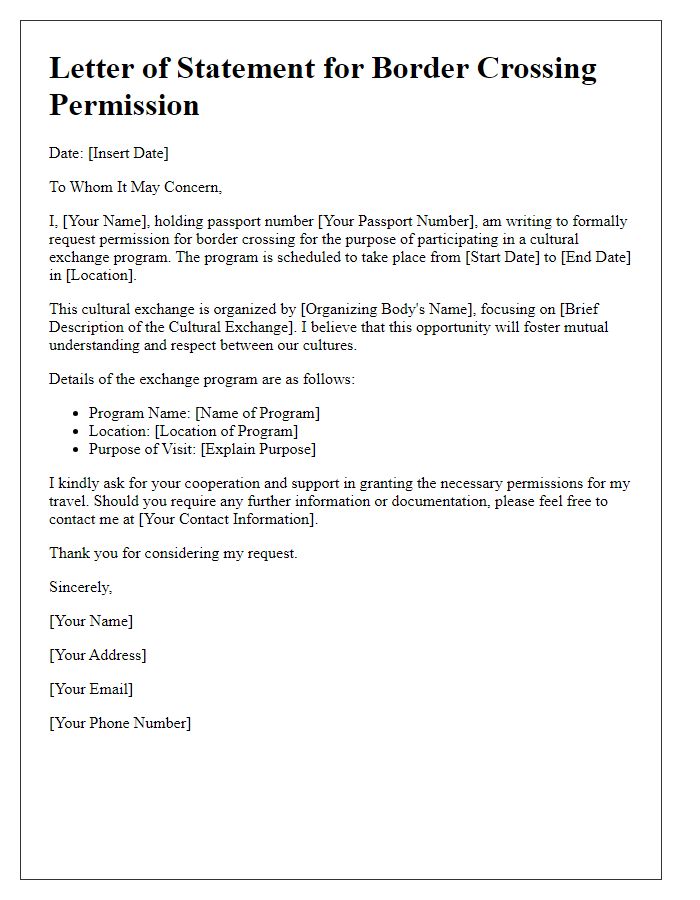
Letter template of declaration for border crossing permission for work-related activities.
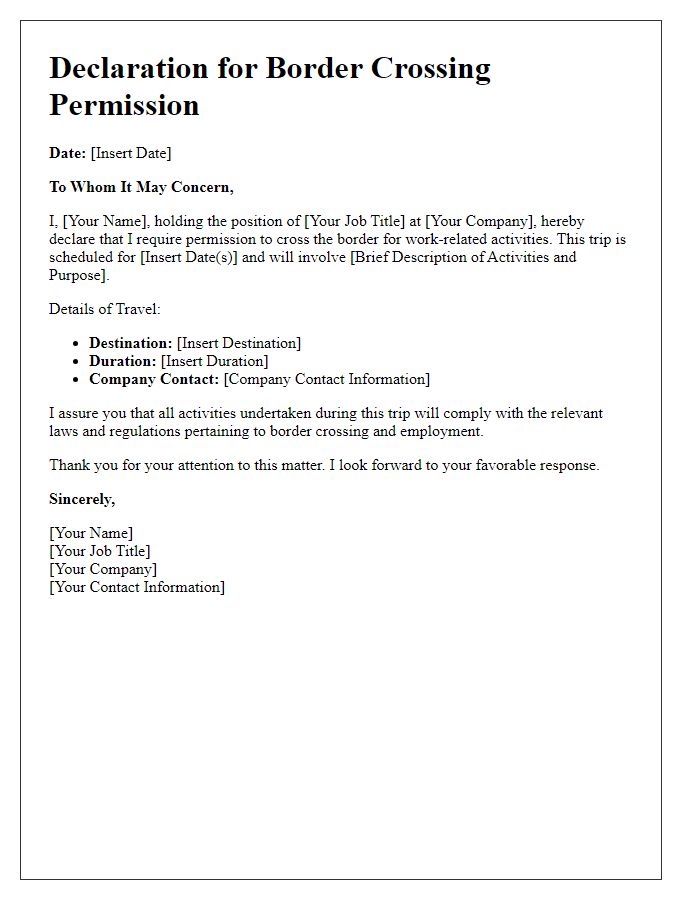



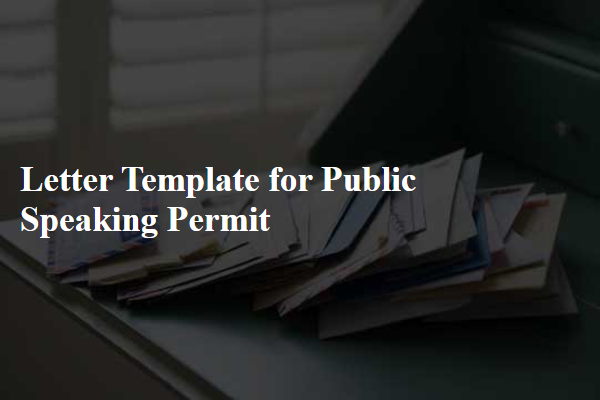
Comments